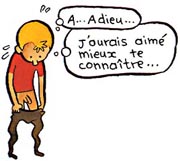
A Web site on the anatomy of the prepuce

A Web site on the anatomy of the prepuce

Un site sur l'anatomie du prépuce

'Goodbye...I would have liked to get to know you better...'.
Riad Sattouf, Ma circoncision ('My Circumcision').
Bréal Jeunesse, 2004.
ridged band?
Ridged band
is the name given by Canadian anatomist Dr. John R. Taylor to a unique part of the human male prepuce (foreskin). The ridged band is a ring of deeply corrugated or ridged mucous membrane lining the tip of the prepuce. When the prepuce is retracted, the main part of the ridged band lies across the top and sides of the shaft of the penis. On the underside of the penis, the ridged band merges into the frenulum of the prepuce. Stretching of the accordion-like ridged band triggers important sexual reflexes and erogenous sensation.

The arrow points to the boundary between the ridged band and the true skin of the foreskin. Eight or 10 ridges, encircling the penis, are clearly visible.
This Web site has been developed to provide scientific information about the prepuce, a poorly understood and much maligned part of the human body.
The information on this site is aimed at medical professionals, journalists, and the general public.
John R. Taylor, MB, MRCPEd, FRCPC is responsible for the content fo research.cirp.org and cirp.org/research, hosted by CIRP. Dr. Taylor is the co-author of two anatomical studies of the prepuce. He and his colleagues first described the ridged band in the British Journal of Urology in 1996.
The Circumcision Information and Resource Pages are a not-for-profit educational resource and library. IntactiWiki hosts this website but is not responsible for the content of this site. CIRP makes documents available without charge, for informational purposes only. The contents of this site are not intended to replace the professional medical or legal advice of a licensed practitioner.
© CIRP.org 1996-2025 | Filetree | Please visit our sponsor and host:
IntactiWiki.